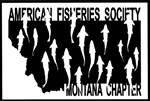Loading...
Abstract
As a watershed advocacy organization, landowner and water rights holder, the Clark Fork Coalition (CFC) has been deeply engaged in Superfund cleanup activities on the upper Clark Fork River for over a decade. As an advocacy organization, the CFC also often serves as a conduit for public grievances. With trout populations at all-time lows in the recently remediated reaches, many long-time recreationists are beginning to point fingers at the cleanup itself. As one Anaconda local put it, “the agencies are creating a fish desert in the upper Clark Fork”. In response to the public’s concerns, the CFC partnered with MT FWP in 2019/2020 to investigate and quantify available fish habitats in both restored and unrestored reaches of the upper Clark Fork River. Floodplain remediation activities result in severe disturbances to riparian ecosystems and recovery of streamside vegetation and other types of fish habitats (such as undercut banks) may take years or decades. In an attempt to catalog and quantify those changes over time, the CFC is hoping data gleaned from the habitat assessment will be used to inform management decisions in the future. This talk will cover the lifecycle of an advocacy-driven research project, from its critique-driven inception, to results and potential implications for management.
Start Date
2-3-2021 11:40 AM
End Date
2-3-2021 11:55 AM
Document Type
Video
Leone presentation: video transcript
Responding to public doubts: what about the habitat?
As a watershed advocacy organization, landowner and water rights holder, the Clark Fork Coalition (CFC) has been deeply engaged in Superfund cleanup activities on the upper Clark Fork River for over a decade. As an advocacy organization, the CFC also often serves as a conduit for public grievances. With trout populations at all-time lows in the recently remediated reaches, many long-time recreationists are beginning to point fingers at the cleanup itself. As one Anaconda local put it, “the agencies are creating a fish desert in the upper Clark Fork”. In response to the public’s concerns, the CFC partnered with MT FWP in 2019/2020 to investigate and quantify available fish habitats in both restored and unrestored reaches of the upper Clark Fork River. Floodplain remediation activities result in severe disturbances to riparian ecosystems and recovery of streamside vegetation and other types of fish habitats (such as undercut banks) may take years or decades. In an attempt to catalog and quantify those changes over time, the CFC is hoping data gleaned from the habitat assessment will be used to inform management decisions in the future. This talk will cover the lifecycle of an advocacy-driven research project, from its critique-driven inception, to results and potential implications for management.
